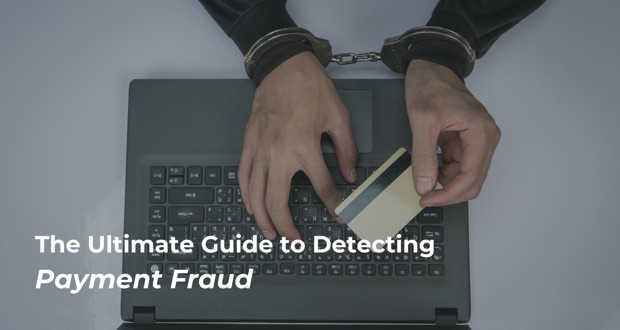Understanding Transaction Fraud
Defining Transaction Fraud
Transaction fraud encompasses a variety of deceptive activities aimed at unauthorized access to funds or sensitive information during a transaction. This type of fraud can have a profound impact on businesses, leading to significant financial losses, reputational damage, and increased operational costs. One of the most common targets for fraudsters is CNP (card not present) payments. In these scenarios, fraudsters use stolen card information to make online purchases without the need for the physical card, making it particularly challenging to detect and prevent.
Types of Transaction Fraud
- Friendly Fraud: This occurs when a legitimate customer makes a purchase but later disputes the charge, claiming it was unauthorized. Often, the customer may have forgotten about the purchase or is attempting to get a refund while keeping the product or service.
- Chargeback Fraud: Similar to friendly fraud, chargeback fraud involves customers intentionally disputing a legitimate transaction to receive a refund. This type of fraud can be particularly damaging as it not only results in financial loss but also increases Chargeback Rates, which can lead to higher fees and penalties from payment processors.
- Identity Theft: In identity theft, fraudsters use stolen personal information, such as Social Security numbers, credit card details, or bank account information, to make unauthorized transactions or open new accounts in the victim's name. This type of fraud can have long-lasting effects on both the victim and the business involved.
- Account Takeover: Account takeover occurs when criminals gain access to a user's account through phishing, hacking, or other means. Once they have control, they can make unauthorized transactions, change account details, and even lock the legitimate user out of their own account. This type of fraud is particularly concerning as it can go undetected for extended periods, leading to significant financial and reputational damage.
The Cost of Fraud
The financial impact of transaction fraud on businesses can be substantial. Direct financial losses include the cost of the fraudulent transactions themselves, as well as any associated fees and penalties. Increased Chargeback Rates can lead to higher processing fees and potential penalties from payment processors, further straining a business's financial resources.
Beyond the immediate financial losses, transaction fraud can also result in indirect costs. These include the loss of customer trust and loyalty, which can be difficult to rebuild once damaged. Customers who experience fraud may be less likely to return to the business, leading to a decline in sales and revenue. Additionally, businesses may face legal consequences and regulatory fines if they fail to adequately protect customer data and prevent fraud.
Given these significant costs, it is crucial for businesses to implement effective fraud prevention measures. By understanding the various types of transaction fraud and their potential impact, businesses can better prepare themselves to detect and prevent fraudulent activities, safeguarding their financial health and maintaining customer trust.
Prevention Strategies
Device Fingerprinting
Device fingerprinting is a powerful fraud detection technique that involves collecting and analyzing various attributes of a device to create a unique identifier, or "fingerprint." This fingerprint can include details such as the device's operating system, browser type, installed plugins, screen resolution, and even hardware configurations. By compiling these attributes, businesses can generate a distinctive profile for each device that interacts with their systems.
Device fingerprinting is particularly effective in identifying suspicious patterns across devices. For instance, if multiple transactions originate from different accounts but share the same device fingerprint, it could indicate fraudulent activity. This technique helps businesses detect and prevent fraud by recognizing and flagging unusual or inconsistent device behaviors.
Moreover, device fingerprinting can be used in conjunction with other fraud detection methods to enhance overall security. For example, combining device fingerprinting with behavioral analytics and machine learning algorithms can provide a comprehensive view of potential fraud risks, enabling businesses to take proactive measures to protect their transactions.
By leveraging device fingerprinting, businesses can significantly improve their ability to detect and prevent transaction fraud, ultimately safeguarding their financial health and maintaining customer trust.
Transaction Fraud Detection
Real-time Monitoring
Real-time monitoring is a critical component of an effective transaction fraud detection strategy. By continuously observing transactions as they occur, businesses can quickly identify and respond to suspicious activities. The significance of real-time monitoring lies in its ability to detect fraud at the moment it happens, thereby preventing fraudulent transactions from being completed and minimizing potential losses.
Machine learning algorithms play a pivotal role in real-time monitoring. These algorithms can analyze vast amounts of transaction data at high speeds, identifying patterns and anomalies that may indicate fraud. By learning from historical data, machine learning models can continuously improve their accuracy and effectiveness in detecting fraudulent activities. For instance, if a transaction deviates significantly from a customer's typical purchasing behavior, the system can flag it for further investigation or automatically block it.
Real-time monitoring, powered by machine learning, enables businesses to stay one step ahead of fraudsters, ensuring that suspicious transactions are identified and addressed promptly.
Behavioral Analytics
Behavioral analytics involves analyzing user behavior to detect anomalies that may indicate fraudulent activity. This approach goes beyond traditional fraud detection methods by focusing on the patterns and habits of individual users. By understanding how legitimate users typically interact with a system, businesses can more effectively identify behaviors that deviate from the norm.
Leveraging historical data is crucial for effective behavioral analytics. By examining past transactions and user interactions, businesses can establish a baseline of normal behavior for each user. This historical data allows the system to recognize patterns and detect deviations that may signal fraud. For example, if a user who typically makes small, local purchases suddenly attempts a large international transaction, the system can flag this as suspicious.
Behavioral analytics can also be used in conjunction with other fraud detection techniques, such as device fingerprinting and real-time monitoring, to provide a comprehensive view of potential fraud risks. By analyzing user behavior and identifying anomalies, businesses can detect and prevent fraud more effectively, protecting their financial health and maintaining customer trust.
Incorporating real-time monitoring and behavioral analytics into a transaction fraud detection strategy enables businesses to proactively identify and address fraudulent activities, ensuring a secure transaction environment for their customers.
Transaction Fraud Protection Solutions
In the battle against transaction fraud, leveraging advanced technology is essential. TrustDecision offers an AI-Based Fraud Management Strategy designed to provide comprehensive protection against various types of transaction fraud. By integrating cutting-edge machine learning algorithms, customizable rules, and real-time decisioning, TrustDecision's solution empowers businesses to detect and prevent fraudulent activities effectively.
Advanced Machine Learning Models
TrustDecision utilizes advanced machine learning models to identify fraudulent patterns with high accuracy. These models analyze vast amounts of transaction data to detect anomalies and suspicious activities. By continuously learning from new data, the algorithms improve over time, enhancing their ability to identify and prevent fraud. This dynamic approach ensures that businesses stay ahead of evolving fraud tactics.
Customizable Rules Engine
One of the standout features of TrustDecision's fraud management solution is its customizable rules engine. This allows businesses to tailor fraud prevention rules to their specific needs and risk profiles. By setting parameters that align with their unique operational requirements, businesses can fine-tune their fraud detection strategies. This flexibility ensures that the fraud protection system is both effective and adaptable to changing circumstances.
Real-time Alerts and Decisioning
TrustDecision's solution offers real-time alerts and decisioning capabilities, providing instant notifications and automated actions to prevent fraud. When a transaction is flagged as suspicious, the system can immediately alert the relevant stakeholders and take predefined actions, such as blocking the transaction or requiring additional verification. This real-time response is crucial for minimizing the impact of fraudulent activities and protecting the business's financial health.
By incorporating these advanced features, TrustDecision's AI-Based Fraud Management Strategy provides a robust and adaptable solution for transaction fraud protection. Businesses can benefit from enhanced security, reduced Chargeback Rates, and improved customer trust, ensuring a safer transaction environment.
Conclusion
In summary, transaction fraud poses a significant threat to businesses, impacting financial stability, customer trust, and operational efficiency. As you navigate the digital landscape, consider the following key takeaways:
Vigilance Matters: Stay alert to the various forms of transaction fraud—friendly fraud, chargeback fraud, identity theft, and account takeover. Recognize the signs and act swiftly.
Prevention Is Paramount: Implement robust prevention strategies. Leverage real-time monitoring, behavioral analytics, and device fingerprinting to safeguard transactions.
TrustDecision’s AI-Based Fraud Management: Explore solutions like TrustDecision’s advanced machine learning models, customizable rules engine, and real-time alerts. These AI-driven tools enhance your fraud prevention efforts.
Remember, proactive measures are essential. By adopting effective strategies and leveraging cutting-edge solutions, you can protect your business and maintain trust with your customers.

.jpeg)





.jpeg)





